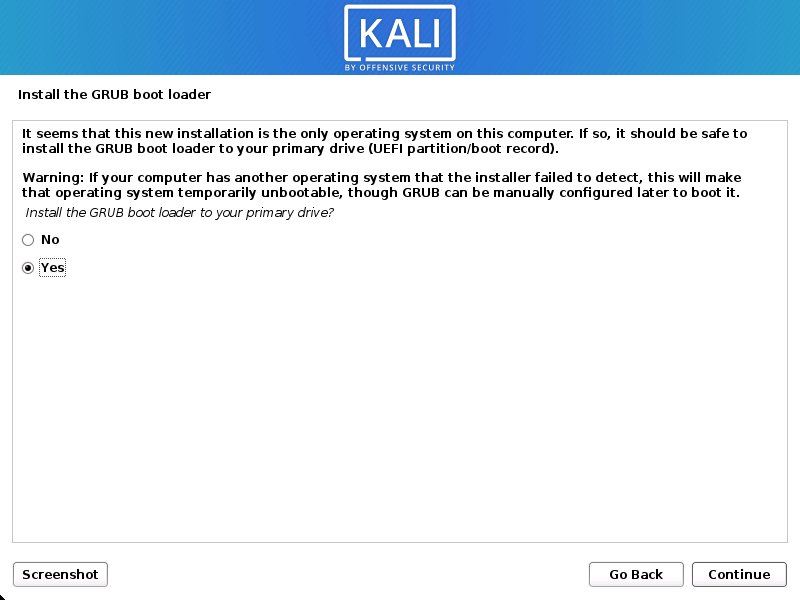

- #KALI LINUX HOW TO INSTALL INSTALL#
- #KALI LINUX HOW TO INSTALL FULL#
- #KALI LINUX HOW TO INSTALL CODE#
#KALI LINUX HOW TO INSTALL INSTALL#
On the higher end, if you opt to install the default Xfce4 desktop and the kali-linux-default metapackage, you should really aim for at least 2 GB of RAM and 20 GB of disk space.

On the low end, you can set up Kali Linux as a basic Secure Shell (SSH) server with no desktop, using as little as 128 MB of RAM (512 MB recommended) and 2 GB of disk space.The installation requirements for Kali Linux will vary depending on what you would like to install and your setup. We will explain other possible scenarios throughout the guide.

In our example, we will be installing Kali Linux in a fresh guest VM, without any existing operating systems pre-installed. Our i386 images, by default use a PAE kernel, so you can run them on systems with over 4 GB of RAM. You should be able to use Kali Linux on newer hardware with UEFI and older systems with BIOS. The hardware requirements are minimal as listed in the section below, although better hardware will naturally provide better performance. Where possible, we would recommend using the amd64 images. Kali Linux is supported on amd64 (x86_64/64-bit) and i386 (x86/32-bit) platforms.

During the setup process you can initiate an LVM encrypted install on either Hard Disk or USB drives.įirst, you’ll need compatible computer hardware.
#KALI LINUX HOW TO INSTALL FULL#
At times, you may have sensitive data you would prefer to encrypt using Full Disk Encryption (FDE). This guide will cover the basic install (which can be done on bare metal or guest VM), with the option of encrypting the partition. Please refer to my blog post on how to install emacs on linux.Installing Kali Linux (single boot) on your computer is an easy process. My favorite is emacs - tough to learn, yet an excellent choice for command line lovers. Please note that any editor for c/c++ programming is fine for getting started. If you are a linux geek & try to explore things in hard-way, then the ultimate option will be emacs. I would suggest to go for a simple editor like sublime if you are just a beginner. This will compile our program & will create a binary called hello.Let’s execute using the command below,Ĭout hello& the execution is obvious as below, Save the above program in a file and name it as hello.c Now, let’s compile the above program and execute it. Let’s verify the installation by executing a simple hello, world C program, The below command will install C/C++ and the compilers, GCC & G++ C lang will require GNU C Compiler, also known as gcc. You need a compiler which converts the written C/C++ program into machine language (i.e binary format).
#KALI LINUX HOW TO INSTALL CODE#
C++ can run most of C code while C cannot run C++ code. C++ is a combination of both procedural and object oriented programming language therefore C++ can be called a hybrid language.Ĭ++ is a super-set of C. The major difference between C and C++ is that C is a procedural programming language and does not support classes and objects. C++Ĭ++ is a multi-paradigm programming language that supports object-oriented programming (OOP), created by Bjarne Stroustrup in 1983 at Bell Labs. The main features of C language include low-level access to memory, simple set of keywords, and clean style, these features make C language suitable for system programming like operating system or compiler development. It was initially developed by Dennis Ritchie between 19. Introduction CĬ is a procedural programming language. In this blog post I will show you how to install C/C++ programming language on ubuntu or kali linux.


 0 kommentar(er)
0 kommentar(er)
